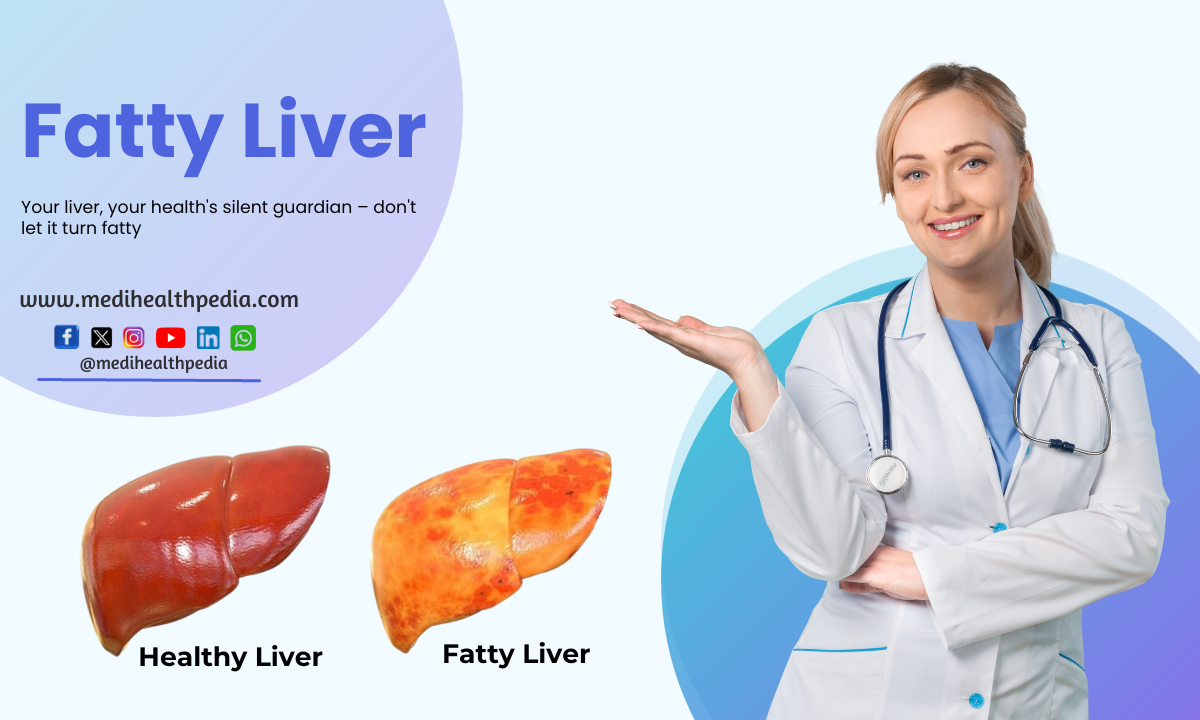Understanding the Causes of Fatty Liver: Tips to Reduce Fatty Liver Effectively
Introduction
Fatty liver, a condition characterized by the accumulation of fat in liver cells, has become increasingly prevalent in recent years, posing a significant health concern. In this comprehensive guide, we will explore various aspects of fatty liver, including practice essentials, grading of fatty liver, clinical presentation, differential diagnosis, workup, conventional treatment and prevention, herbal medicines for treatment, lifestyle modifications, and conclude with valuable insights for those dealing with this condition.

Practice Essentials of Fatty Liver
Understanding the fundamental aspects of fatty liver is crucial for healthcare professionals and individuals. Let’s delve into the practice essentials of this condition.
- Definition and Incidence
Fatty liver, also known as hepatic steatosis, is characterized by the accumulation of excess fat in liver cells. It can be caused by various factors, including alcohol consumption (alcoholic fatty liver disease) and non-alcoholic factors (non-alcoholic fatty liver disease or NAFLD). NAFLD has become the most common liver disorder globally and is often associated with obesity and metabolic syndrome.
- Grading of Fatty Liver
Fatty liver can range in severity, which is typically graded on a scale from 1 to 3:
- Grade 1 (Mild): Involves minimal fat accumulation in liver cells.
- Grade 2 (Moderate): Indicates moderate fat accumulation and is considered an intermediate stage.
- Grade 3 (Severe): Signifies a significant amount of fat in liver cells, which can lead to inflammation and fibrosis.
The grading helps assess the extent of liver damage and guide treatment decisions.
- Risk Factors
Several risk factors are associated with fatty liver, including:
- Obesity
- Insulin resistance
- Type 2 diabetes
- High blood pressure
- High cholesterol levels
- Rapid weight loss
- Certain medications
- Excessive alcohol consumption
Understanding these risk factors is crucial for prevention and management.
Clinical Presentation of Fatty Liver
Fatty liver can present with a range of symptoms, and its clinical presentation varies from person to person. Common symptoms and signs may include:
- Fatigue
- Right upper abdominal discomfort
- Unexplained weight loss
- Enlarged liver
- Elevated liver enzymes in blood tests
- Yellowing of the skin and eyes (jaundice) in severe cases
It’s important to note that many individuals with fatty liver may remain asymptomatic, and the condition may only be detected during routine medical examinations or when investigating other health issues.
Differential Diagnosis
Fatty liver shares similarities with other liver conditions and diseases, making differential diagnosis essential for accurate assessment. Conditions that may mimic or coexist with fatty liver include:
- Alcoholic liver disease
- Non-alcoholic steatohepatitis (NASH)
- Viral hepatitis
- Hemochromatosis (iron overload)
- Wilson’s disease (copper buildup)
- Autoimmune liver diseases
Distinguishing between these conditions is crucial for appropriate management and treatment.
Workup for Fatty Liver
Diagnosing fatty liver typically involves a combination of clinical evaluation, blood tests, imaging studies, and sometimes, liver biopsy. Common diagnostic tests include:
- Liver Function Tests
Blood tests measure liver enzymes (AST and ALT) and bilirubin levels. Elevated levels of these enzymes can indicate liver inflammation.
- Imaging Studies
Ultrasound, CT scans, or MRI can help visualize the liver and assess the extent of fat accumulation. These tests can also detect signs of fibrosis or cirrhosis.
- Liver Biopsy
In some cases, a liver biopsy may be performed to assess the severity of the disease, determine the degree of inflammation and fibrosis, and guide treatment decisions.
Conventional Treatment of Fatty Liver
The treatment of fatty liver aims to reduce fat accumulation, manage underlying risk factors, and prevent disease progression. Conventional treatment options include:
- Lifestyle Modifications
- Weight Loss: Achieving and maintaining a healthy weight through diet and exercise is a cornerstone of fatty liver management, particularly in cases of obesity-related NAFLD.
- Dietary Changes: Adopting a balanced diet with reduced calorie intake, low saturated fats, and limited sugar can help manage the condition.
- Regular Exercise: Physical activity supports weight loss, improves insulin sensitivity, and benefits overall health.
- Control of Underlying Conditions: Managing conditions like diabetes, high blood pressure, and high cholesterol is crucial.
Medications
- In some cases, healthcare providers may prescribe medications to manage underlying conditions or to address specific aspects of fatty liver, such as insulin-sensitizing medications for those with insulin resistance.
Regular Monitoring
Individuals with fatty liver should undergo regular check-ups to monitor liver enzymes, assess liver health, and track progress.
Alcohol Abstinence
For those with alcoholic fatty liver disease, alcohol abstinence is essential.
Prevention of Fatty Liver
Preventing fatty liver involves adopting a proactive approach to a healthy lifestyle and addressing risk factors:
- Maintain a healthy weight through a balanced diet and regular exercise.
- Limit alcohol consumption, especially if you have a history of alcohol-related liver disease.
- Manage underlying conditions such as diabetes, high blood pressure, and high cholesterol.
- Avoid rapid weight loss and crash diets.
Herbal Medicines for Fatty Liver
Complementary and alternative therapies, including herbal remedies, are sometimes considered as adjunct treatments for fatty liver. Some herbs and supplements that have been studied for their potential benefits in liver health include:
- Milk Thistle (Silymarin): Known for its antioxidant properties, milk thistle is believed to protect liver cells.
- Turmeric (Curcumin): Curcumin, the active compound in turmeric, is known for its anti-inflammatory and antioxidant properties, which may benefit liver health.
- Artichoke: Artichoke extract has shown promise in improving liver function.
- Green Tea: Green tea is rich in antioxidants and has been studied for its potential benefits in liver health.
While these herbal remedies have shown promise in some studies, their effectiveness can vary between individuals. Consult a healthcare provider before using herbal medicines, especially if you have existing medical conditions or are taking other medications.
Lifestyle Modification for Fatty Liver
Lifestyle modifications are pivotal in managing and preventing fatty liver:
- Diet: Adopt a balanced diet rich in fruits, vegetables, whole grains, lean proteins, and healthy fats while limiting processed foods, sugar, and saturated fats.
- Exercise: Regular physical activity supports weight management, improves insulin sensitivity, and benefits liver health.
- Moderate Alcohol Consumption: For individuals with non-alcoholic fatty liver disease, it’s essential to limit or eliminate alcohol consumption.
- Stress Reduction: Reducing stress through relaxation techniques, such as meditation and deep breathing exercises, can support overall well-being.
Conclusion
Fatty liver, characterized by the accumulation of fat in liver cells, is a common liver condition with a range of causes and risk factors. While it may often be asymptomatic, it can lead to serious health complications if left untreated. Understanding the grading of fatty liver, clinical presentation, workup, and treatment options is essential for both healthcare professionals and individuals.
Prevention and management strategies, including lifestyle modifications, medication, and herbal remedies, can help improve liver health and prevent the progression of the disease. By adopting a proactive approach to a healthy lifestyle and seeking appropriate medical care, individuals can effectively manage fatty liver and reduce the risk of complications, ultimately leading to better overall health and well-being.

